#Genetics
Explore tagged Tumblr posts
Note
i like to imagine that you dont just look up random genomes, or are a bot, but rather youre a person who knows every genome
String identified: t ag tat t t a g, a a t, t at a g
Closest match: Hmm... Yes... Arcobacter butzleri ED-1 DNA, complete genome
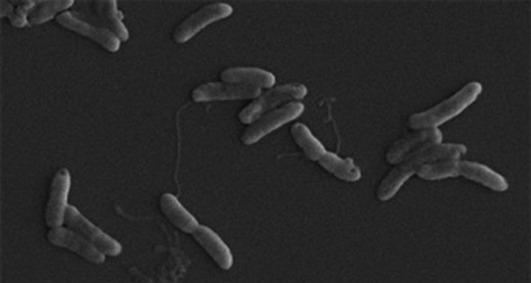
(image source)
#tumblr genetics#genetics#biology#science#asks#anon#microbes#bacteria#arcobacter#butzleri#FOOD POISONING!!!!!!!#arcobacter is characterized by being very similar to campylobacter (also causes food poisoning)#the key difference is that campylobacter is unable to grow under 30 degrees C#while arcobacter is#this makes it much harder to account for in food service!#so far arcobacter has been noted to be found in all sorts of water#as well as animal products such as pork or poultry#so remember to cook your food well!
522 notes
·
View notes
Text
NOT how genetics works. Well, it is, but it oversimplifies things.
Let's assume simple Mendelian inheritance with two alleles: C for cheese, c for no cheese, where the C allele is dominant as the post above states. Thus, CC will be a Cheeseburger Cc will be a Cheeseburger cc will be a Hamburger
The second Mendelian Law of Segregation states that a parent-burger can only pass down one of their alleles to their baby-burgers, and both alleles are equally likely to be passed on. This means the likeliness of a baby-burger being cheese or ham is dependant on the Cheeseburger parent's genotype. Let's do some punnet squares to explain.
A CC Cheeseburger parent (also called a homozygote) will look like this:

Now compare this to a Cc Cheeseburger parent (also called a heterozygote), which looks like this:

Therefore, a Cheeseburger/Hamburger cross will result in two scenarios: Scenario one, where all the baby-burgers are guarenteed to be cheeseburgers. Scenario two, where baby-burgers are equally likely to be either a cheeseburger or a hamburger. This technically makes cheeseburger children 'more likely' as they have the chance to show up in both potential crosses while hamburger only shows up in one. However. If you have a cross that's having both ham and cheese baby-burgers, as what the uneducated reader could assume from the post above, the ham-to-cheese ratio among the offspring will always be 50/50. Neither more likely than the other.
if a hamburger and a cheeseburger have a baby it most likely will have cheese on it because the cheese trait come from a dominant gene
#of course cheese could be a polygene or Y-linked or something#but thats more complicated#if you want the Y-linked (or X linked) explaination i can also do that#shitpost#selkie barks#genetics#biology#im doing this to procrastinate my genetics homework can you tell
51K notes
·
View notes
Note
How did you learn what you know RE genetics? I’d love to play with plant genetics as a hobby, but I have no idea where to start learning the foundational information without doing a whole ass degree lol
Some of my knowledge comes from having a mother who was a lab manager for a research lab for my entire life- I knew the terms "het" and "homo" as biology terms when I was a VERY small child, before they ever applied to sexualities (which incidentally made it VERY easy to understand sexualities when I hit that age, and extremely easy to conclude "hm if I don't feel sexual attraction then that must be "a"sexual as "a" in science basically means "not"" and let me tell you I was pleased to discover I was correct in my hypothesis, but also completely ready to invent asexuality as a sexual identity as a 15 year old if I had to). Some of it came from biology classes in HS and college. A LOT of it came from talking to other people who were breeders and learning from them (and unfortunately, a lot of it came from looking stuff up to verify what they had told me, and finding out they were wrong).
If you are starting COMPLETELY from scratch with NO genetics knowledge whatsoever, don't feel like you have to take it all on at once. The first thing is to familiarize yourself with some of the more basic terminology used across all species- stuff like heterozygous, allele, chromosome, etc. I have a page with some of the basic terms I use for explaining genetics to peafowl folks (in HOPEFULLY very simple language, but if you get confused I would love to hear where/why, so I can try to finesse it a little more, since I WANT to be able to link that page to people who know nothing about genetics), but it definitely has some "peafowl" (bird) stuff mixed in. Still, once you have the terms in hand, you can easily look up the terms and read more about what they mean and how they relate to one another. EVERY time there's a term you don't know, look it up and read about it. I STILL learn new things by looking them up like this.
You'll also want to learn to use a punnett square eventually, if you're doing offspring determination based on parent genetics. I ALSO have a page on how to use them (at least to track autosomal mutations, but also one to track sex linked.... though that one is HEAVILY geared to peafowl, who have one Very Weird Sex-Linked Problem Gene Set that isn't usually a problem and required a weird solution to track)! As well as a page on how to use them to track multiple genes at once, but maybe save that one for later.
I am also happy to answer whatever questions I can if you run into something you can't find the answer to or don't understand the source material about, or if I don't know I can probably find out.
#genetics#asks#anon asks#it would probably be easier with a class#at this point I could probably teach a basic genetics class#but what a pain in the butt teaching in a structured way is#teachers do not get paid enough I think
44 notes
·
View notes
Text
"Once thought to be extinct, black-footed ferrets are the only ferret native to North America, and are making a comeback, thanks to the tireless efforts of conservationists.
Captive breeding, habitat restoration, and wildlife reintegration have all played a major role in bringing populations into the hundreds after near total extinction.
But one other key development has been genetic cloning.
In April [2024], the United States Fish and Wildlife Service announced the cloning of two black-footed ferrets from preserved tissue samples, the second and third ferret clones in history, following the birth of the first clone in December 2020.
Cloning is a tactic to preserve the health of species, as all living black-footed ferrets come from just seven wild-caught descendants. This means their genetic diversity is extremely limited and opens them up to greater risks of disease and genetic abnormalities.
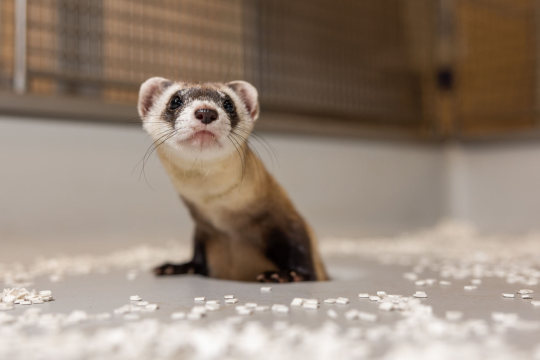
Now, a new breakthrough has been made.
Antonia, a black-footed ferret cloned from the DNA of a ferret that lived in the 1980s has successfully birthed two healthy kits of her own: Sibert and Red Cloud.
These babies mark the first successful live births from a cloned endangered species — and is a milestone for the country’s ferret recovery program.
The kits are now three months old, and mother Antonia is helping to raise them — and expand their gene pool.
In fact, Antonia’s offspring have three times the genetic diversity of any other living ferrets that have come from the original seven ancestors.

Researchers believe that expanded genetic diversity could help grow the ferrets’ population and help prime them to recover from ongoing diseases that have been massively detrimental to the species, including sylvatic plague and canine distemper.
“The successful breeding and subsequent birth of Antonia's kits marks a major milestone in endangered species conservation,” said Paul Marinari, senior curator at the Smithsonian’s National Zoo and Conservation Biology Institute.
“The many partners in the Black-footed Ferret Recovery Program continue their innovative and inspirational efforts to save this species and be a model for other conservation programs across the globe.”

Antonia actually gave birth to three kits, after mating with Urchin, a 3-year-old male ferret. One of the three kits passed away shortly after birth, but one male and one female are in good health and meeting developmental milestones, according to the Smithsonian.
Mom and babies will remain at the facility for further research, with no plans to release them into the wild.
According to the Colorado Sun, another cloned ferret, Noreen, is also a potential mom in the cloning-breeding program. The original cloned ferret, Elizabeth Ann, is doing well at the recovery program in Colorado, but does not have the capabilities to breed.
Antonia, who was cloned using the DNA of a black-footed ferret named Willa, has now solidified Willa’s place as the eighth founding ancestor of all current living ferrets.
“By doing this, we’ve actually added an eighth founder,” said Tina Jackson, black-footed ferret recovery coordinator for the U.S. Fish and Wildlife Service, in an interview with the Colorado Sun.
“And in some ways that may not sound like a lot, but in this genetic world, that is huge.”

Along with the USFWS and Smithsonian, conservation organization Revive & Restore has also enabled the use of biotechnologies in conservation practice. Co-founder and executive director Ryan Phelan is thrilled to welcome these two new kits to the black-footed ferret family.
“For the first time, we can definitively say that cloning contributed meaningful genetic variation back into a breeding population,” he said in a statement.
“As these kits move forward in the breeding program, the impact of this work will multiply, building a more robust and resilient population over time.”"
-via GoodGoodGood, November 4, 2024
#ferret#ferrets#mustelid#black footed ferret#conservation#endangered species#conservation biology#biodiversity crisis#dna#genetics#cloning#good news#hope#hope posting#hopecore#hopepunk
10K notes
·
View notes
Text

pikachus if they had common coat color variations found in domestic mammals 🐭⚡️
#i want to make more variations and with more pokemon too lol#pokemon#pikachu#genetics#webcore#y2k#rodent#myart
3K notes
·
View notes
Text
String identified: at a t a t cgatt. T g at t t t aga? T g at t t t aga.
Closest match: Odontocerum albicorne genome assembly, chromosome: Z Common name: Silver Sedge

(image source)
Never ever ever eat raw white onion and then smoke cigarette.
#tumblr genetics#genetics#biology#science#bugs#insects#flies#caddisflies#silver sedge#caddisfly#this little guy lays its larvae in stony rivers and streams#and tends to eat things found in and around these streams too#some caddisflies even eat phytoplankton found in the water!
42K notes
·
View notes
Text
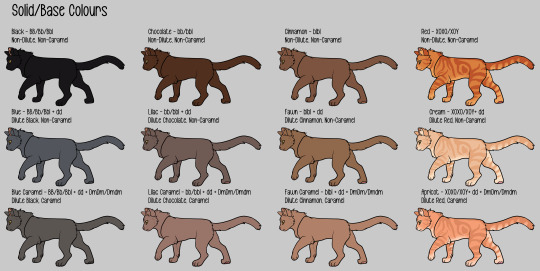
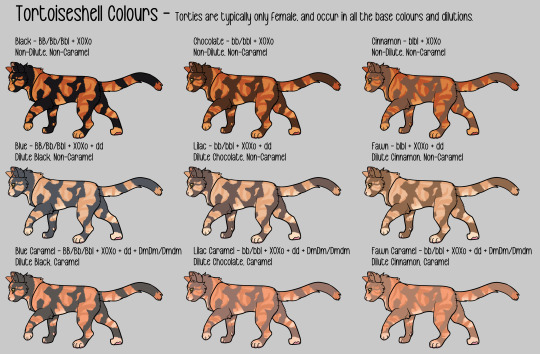

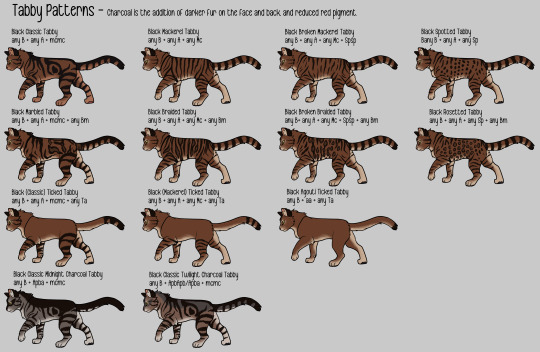
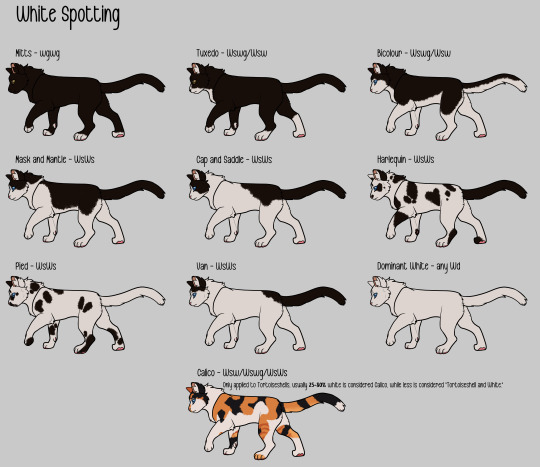
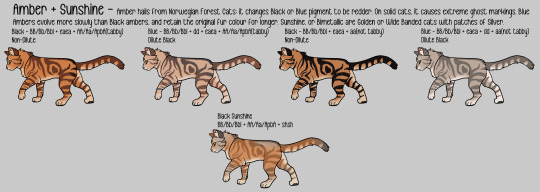

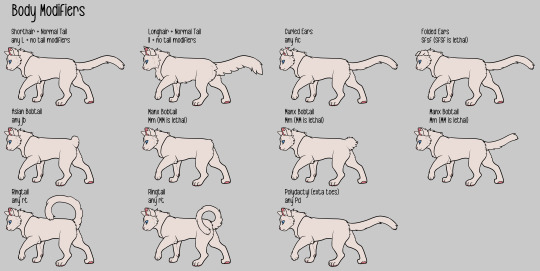
made these studying cat genetics over the past 2 weeks!
i felt like there weren't enough visual guides of cat genetics so i went ahead and made some simple ones, my main references were Sparrow's Garden the website, Sparrow's Garden the blog, Messybeast, and The Little Carnivore.
Please only use these for general reference and not for tracing, using as a base, or reposting!! You can trace the poses for practice, but please don't post them if you do so. Please don't use them as a free Base, either.
#paw#digital art#willow art#art#cat art#cat#cat design#cat genetics#cats#warrior cats#kitties#kitty#genetics#genes#warriors#warriors designs#warrior cats design
9K notes
·
View notes
Text
As a physiologist let me say a few words.
I don’t care about sports. I don’t give a damn about the Olympics for other reasons I won’t talk about. But I’m pissed now.
If we are to disqualify the people from the Olympics, we should be 100% fair. No biological advantages allowed!
2-meter-tall basketball player? No way, that’s unfair.
That gymnast with hyper-mobility? BOO. Unfair.
Usain Bolt with the gene ensuring the composition of his muscles? How dare he?
Believe or not, the professional sport is based on anomalies and mutation. That’s the selection. It sucks and it’s not fair but it is what it is.
Also, having these mutations doesn’t mean you’re automatically great at sports - I’m shit at gymnastics while being hypermobile as fuck. So it’s still unfair even to us expressing these traits, lol.
There are XY AFAB women!!!
This happens during the pregnancy if the child has male chromosomes but there is not enough male hormones in the development of the baby resulting in the baby being assigned female at birth. It’s a form of intersex, but there is literally no physical difference between such child and XX AFAB baby.
Those are cis women. Not trans men. Not even trans men.
The people screaming about the Olympics being a disgrace and the proof of collapse of the society are literally the people who are usually like “there are two genders based on what’s in their pants”. Now it’s the chromosomes you’re checking?
Maybe you are an XY-woman, maybe your sister is. You don’t know.
Stop using biology for spreading misinformation about intersex people, transgender people and women in general.
2K notes
·
View notes
Text
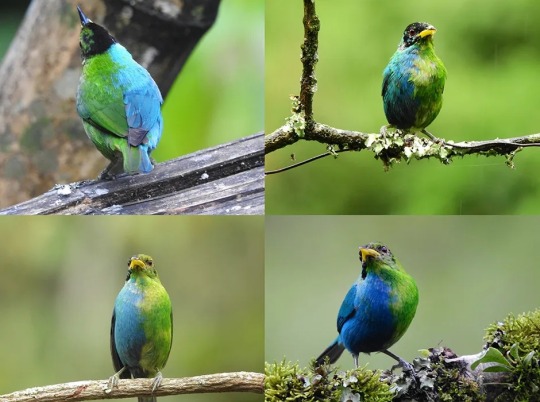
this green honeycreeper exhibits a genetic mutation known as bilateral gynandromorphism, where one half of the body is male and one half is female. the bird was spotted in the wild in columbia; researchers suspect the bird is not able to reproduce, but appears to be in good health. they are the second known example of a bilateral gynandromorph green honeycreeper; the last was recorded over 100 years ago.
4K notes
·
View notes
Text
Again, I've never kept them, I've never even seen one in real life, so I don't know much about them beyond knowing they exist and that they make for poor a/a replacements in some phenotypes. If I had to guess, I would say it's possible, but you'd have to look for research on it yourself to find out. The base coat color for mus musculus is black already. Wild type mice (agouti color) are black mice with brown ticking on the tips of their fur. Remove the ticking, you get a black mouse. A^e increases the pigment, but I'm not sure what method, or if that method is considered melanism or not if the animal is already black. My understanding of melanism is limited, but I know the Mc1r gene is responsible for most cases of melanism; I don't THINK that is the gene in play here, BUT melanism can be caused by genes on other loci, it's just a matter of finding out if the a locus is one of them for mice. Happy hunting!

please look at this beautiful mouse
23K notes
·
View notes
Note
im in love with you /p because i love seeing your posts. i love reading the little notes you leave in the tags about whatever creature a certain post turns out to be <3
String identified: t / ca g t. ag t tt t a t tag at at cat a cta t t t t <
Closest match: Tithorea harmonia genome assembly, chromosome: 1 Common name: Harmonia Tigerwing

(image source)
#tumblr genetics#genetics#asks#biology#science#anonymouscringe#bugs#insects#butterflies#harmonia tigerwing#harmonia tiger#this butterfly is toxic#hence the bright patterns#it can be found in south america and mexico :)
285 notes
·
View notes
Text
No because the way I get so VISCERALLY angry when someone refers to an animal as albino when they’re actually leucistic, erythristic, or xanthochromatic is both deeply irrational and greatly unhealthy
ALBINISM
Total loss of melanin in the body, i.e. skin, hair/fur/feathers, and eyes (the eyes look pink/red because the lack of melanin in the eye exposes the blood vessels within it to light, which then reflects their red hue)
LEUCISM
Partial loss of melanin in the body; the pattern of melanin distribution is unique in each case, so some people or animals with this condition may have patches of typically-colored skin/hair/fur in addition to pigmented eyes, while others may only have the aforementioned ocular pigmentation
ERYTHRISM
Abnormal prevalence of reddish pigment in the skin/hair/fur/feathers of an animal; concentration of this pigment varies case by case, so humans/animals with the condition can present anywhere from only slightly pink to intensely red in color; to my knowledge, the condition does not affect the eyes
XANTHOCHROMISM
Abnormal prevalence of yellow pigment in the skin/hair/fur/feathers of an animal; similar to erythrism, color intensity can vary from light golden hues to deep yellows; again, to my knowledge, the condition does not affect the eyes
Thank you for coming to my TED Talk
#don’t get me wrong#i didn’t always know the difference either#but still#pet peeves#biology#genetics#animals#albinism#leucism#erythrism#xanthochromism#autism#special interest#ted talks
2K notes
·
View notes
Text
With the fast fashion industry… how it is… finding sustainable ways to make fabric is super important. Fibers from synthetic fabrics make up 35% of the microplastics that make their way to the ocean. Natural fibers sourced from plants or animals are much more environmentally sound options, including silk.
Currently, the only way to get natural silk on a large scale is to harvest it from silkworms. You’ve probably heard about the strength and durability of spider silk (it is 6x stronger than Kevlar!) but as of yet there hasn’t been a good way of getting it. Raising spiders the way people do silkworms isn’t really an option. Spiders need a lot of room to build their webs compared to silkworms, and individual spiders don’t produce that much silk. Plus, when you put a whole bunch of spiders in captivity together, they tend to start eating each other.
Attempts to artificially recreate spider silk have also been less than successful. Spider silk has a surface layer of glycoproteins and lipids on it that works as a sort of anti-aging “skin”- allowing the silk to withstand conditions such as sunlight and humidity. But this layer has been very tricky to reproduce.
However, as scientists in China realized, silkworms produce that same kind of layer on their silk. So what if we just genetically modified silkworms to produce spider silk?
That is exactly what the researchers at Donghua University in Shanghai did. A team of researchers introduced spider silk protein genes to silkworms using CRISPR-Cas9 gene editing and microinjections in silkworm eggs. In addition to this, they altered the spider silk proteins so that they would interact properly with the other proteins in silkworm glands. And it worked! This is the first study ever to produce full length spider silk proteins from silkworms.
The applications of this are incredibly exciting. In addition to producing comfortable textiles and new, innovative bulletproof vests, silkworm generated spider silk could be used in cutting edge smart materials or even just to create better performing sutures. In the future, this team intends to research how to modify this new spider silk to be even stronger, and they are confident that “large-scale commercialization is on the horizon."
#science#chemistry#biology#sustainability#fashion#bugs#spiders#silkworms#nature#biochemistry#stemblr#genetics
5K notes
·
View notes
Text

Largest animal genome sequenced — and just 1 chromosome is the size of the entire human genome
Scientists sequenced the largest known animal genome in a species of lungfish — ancient fish that breathe air.
Scientists have sequenced the largest known animal genome — and it's 30 times bigger than the human genome. The genome belongs to the South American lungfish (Lepidosiren paradoxa), a primeval, air-breathing fish that "hops" onto land from the water using weird, limb-like fins. The fish's DNA code expanded dramatically over the past 100 million years of evolutionary history, racking up the equivalent of one human genome every 10 million years, researchers found. The findings could shed light on how genomes expand across the tree of life...
Read more: Largest animal genome sequenced — and just 1 chromosome is the size of the entire human genome | Live Science
960 notes
·
View notes
Note
I AM cool, and I'm thrilled y'all are learning bird genetics and he's cool for teaching them alongside the rest. I wish my biology teachers had done the same, but they did NOT and instead I had to learn sex linked genetics over an excruciating 4-hour long forum post discussion where no one thought to tell me birds had z and w instead of x and y and I just got increasingly confused over trying to figure out what the fuck drugs they were on getting the results they were getting until someone had a lightbulb about clearing up the ZW thing. Thank goodness he's heading this off at the pass. Doing Mendel's work.
It's funny, I'm taking a biology class right now and we're talking about genetics in the unit we're in. Tonight is sex linked traits. I could use you as homework XD
Please in your next class, raise your hand, and ask your professor "does it work the same in birds" and tell me what they say
#genetics#replies#I'm also glad he's using the Z and W in the chart with the notations#I know some people using x and y use asterisks and it gets confusing#I went with writing the z and w for teaching people and I'm glad some other teacher is doing it too
194 notes
·
View notes